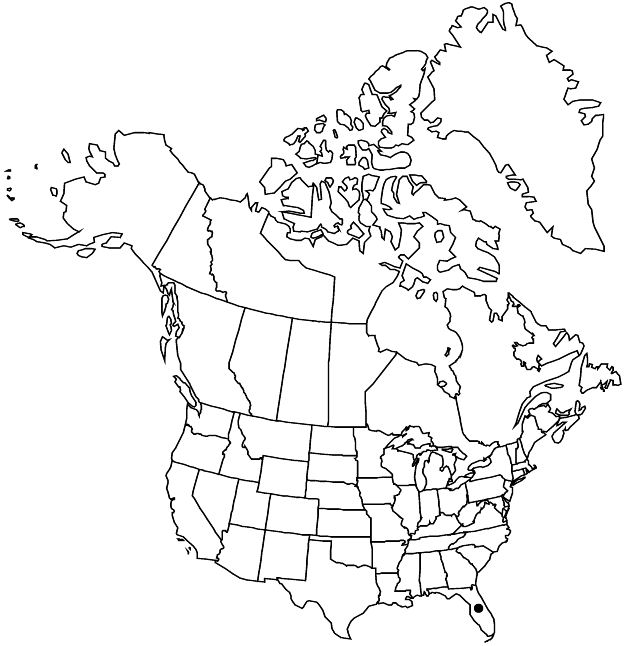Acalypha chamaedrifolia
in A. P. de Candolle and A. L. P. P. de Candolle, Prodr. 15(2): 879. 1866.
Herbs, perennial, 1–2.5 dm, monoecious. Stems prostrate to ascending, pubescent. Leaves: petiole 0.1–0.5 cm; blade ovate to orbiculate, 0.3–2.1 × 0.3–1.2 cm, base cordate or rounded, margins serrate-crenate, apex obtuse or acute. Inflorescences bisexual, terminal; peduncle 0.2–1 cm, pistillate portion 1.5–3 × 1–1.5 cm, staminate portion 0.8–2.5 cm; allomorphic pistillate flowers absent. Pistillate bracts crowded (inflorescence axis not or sparingly visible between bracts), 4–6 × 7–10 mm, abaxial surface pubescent and sessile-glandular; lobes (7–)10–13, deltate to triangular, 1/5 bract length. Pistillate flowers: pistil 3-carpellate; styles multifid or laciniate. Capsules smooth, pubescent. Seeds 1.2–1.4 mm, minutely pitted.
Phenology: Flowering and fruiting year-round, mainly spring–fall.
Habitat: Rocky pine woods, disturbed areas.
Elevation: 0–10 m.
Distribution

Fla., West Indies.
Discussion
In the flora area, Acalypa chamaedrifolia is native to Miami-Dade and Monroe counties but has been sparingly, and apparently accidentally, introduced farther north.
Selected References
None.